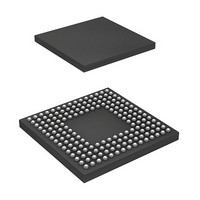DF2552BR26DV Renesas Electronics America, DF2552BR26DV Datasheet - Page 185

DF2552BR26DV
Manufacturer Part Number
DF2552BR26DV
Description
IC H8S/2552 MCU FLASH 176-LFBGA
Manufacturer
Renesas Electronics America
Series
H8® H8S/2500r
Specifications of DF2552BR26DV
Core Processor
H8S/2000
Core Size
16-Bit
Speed
26MHz
Connectivity
I²C, SCI
Peripherals
POR, PWM, WDT
Number Of I /o
104
Program Memory Size
512KB (512K x 8)
Program Memory Type
FLASH
Ram Size
32K x 8
Voltage - Supply (vcc/vdd)
3 V ~ 5.5 V
Data Converters
A/D 16x10b; D/A 2x8b
Oscillator Type
Internal
Operating Temperature
-40°C ~ 85°C
Package / Case
176-LFBGA
Lead Free Status / RoHS Status
Lead free / RoHS Compliant
Eeprom Size
-
Available stocks
Company
Part Number
Manufacturer
Quantity
Price
Company:
Part Number:
DF2552BR26DV
Manufacturer:
Renesas Electronics America
Quantity:
10 000
- Current page: 185 of 980
- Download datasheet (6Mb)
Section 7 Bus Controller
Area 0: Area 0 includes on-chip ROM, and in ROM-enabled extended mode, space excluding on-
chip ROM is external address space.
When external address space of area 0 is accessed, the CS0 signal can be output.
Either basic bus interface or burst ROM interface can be selected for area 0.
Areas 1 to 6: In external extended mode, all of areas 1 to 6 are external address spaces. When
external address spaces of areas 1 to 6 are accessed, the CS1 to CS6 pin signals can be output
respectively. Only the basic bus interface can be used for areas 1 to 6.
Area 7: Area 7 includes on-chip RAM and internal l/O registers. In external extended mode, the
space excluding on-chip RAM and internal l/O registers, is external address space. The on-chip
RAM is enabled when the RAME bit in the system control register (SYSCR) is set to 1; when the
RAME bit is cleared to 0, the on-chip RAM is disabled and the corresponding space becomes
external address space.
When external address space of area 7 is accessed, the CS7 signal can be output.
Only the basic bus interface can be used for area 7.
7.4.4
Chip Select Signals
This LSI can output chip select signals (CS0 to CS7) to areas 0 to 7, and these signals are driven
low respectively when the corresponding external address space area is accessed. Figure 7.3 shows
an example of CSn (n = 0 to 7) signal output timing. Enabling or disabling of the CSn signal is
performed by setting the data direction register (DDR) for the port corresponding to the particular
CSn pin.
In ROM-enabled extended mode, pins CS0 to CS7 are all placed in the input state after a power-
on reset, and so the corresponding DDR should be set to 1 when outputting signals CS0 to CS7.
For details, see section 9, I/O Ports.
Rev. 6.00 Sep. 24, 2009 Page 137 of 928
REJ09B0099-0600
Related parts for DF2552BR26DV
Image
Part Number
Description
Manufacturer
Datasheet
Request
R

Part Number:
Description:
KIT STARTER FOR M16C/29
Manufacturer:
Renesas Electronics America
Datasheet:

Part Number:
Description:
KIT STARTER FOR R8C/2D
Manufacturer:
Renesas Electronics America
Datasheet:

Part Number:
Description:
R0K33062P STARTER KIT
Manufacturer:
Renesas Electronics America
Datasheet:

Part Number:
Description:
KIT STARTER FOR R8C/23 E8A
Manufacturer:
Renesas Electronics America
Datasheet:

Part Number:
Description:
KIT STARTER FOR R8C/25
Manufacturer:
Renesas Electronics America
Datasheet:

Part Number:
Description:
KIT STARTER H8S2456 SHARPE DSPLY
Manufacturer:
Renesas Electronics America
Datasheet:

Part Number:
Description:
KIT STARTER FOR R8C38C
Manufacturer:
Renesas Electronics America
Datasheet:

Part Number:
Description:
KIT STARTER FOR R8C35C
Manufacturer:
Renesas Electronics America
Datasheet:

Part Number:
Description:
KIT STARTER FOR R8CL3AC+LCD APPS
Manufacturer:
Renesas Electronics America
Datasheet:

Part Number:
Description:
KIT STARTER FOR RX610
Manufacturer:
Renesas Electronics America
Datasheet:

Part Number:
Description:
KIT STARTER FOR R32C/118
Manufacturer:
Renesas Electronics America
Datasheet:

Part Number:
Description:
KIT DEV RSK-R8C/26-29
Manufacturer:
Renesas Electronics America
Datasheet:

Part Number:
Description:
KIT STARTER FOR SH7124
Manufacturer:
Renesas Electronics America
Datasheet:

Part Number:
Description:
KIT STARTER FOR H8SX/1622
Manufacturer:
Renesas Electronics America
Datasheet:

Part Number:
Description:
KIT DEV FOR SH7203
Manufacturer:
Renesas Electronics America
Datasheet:











